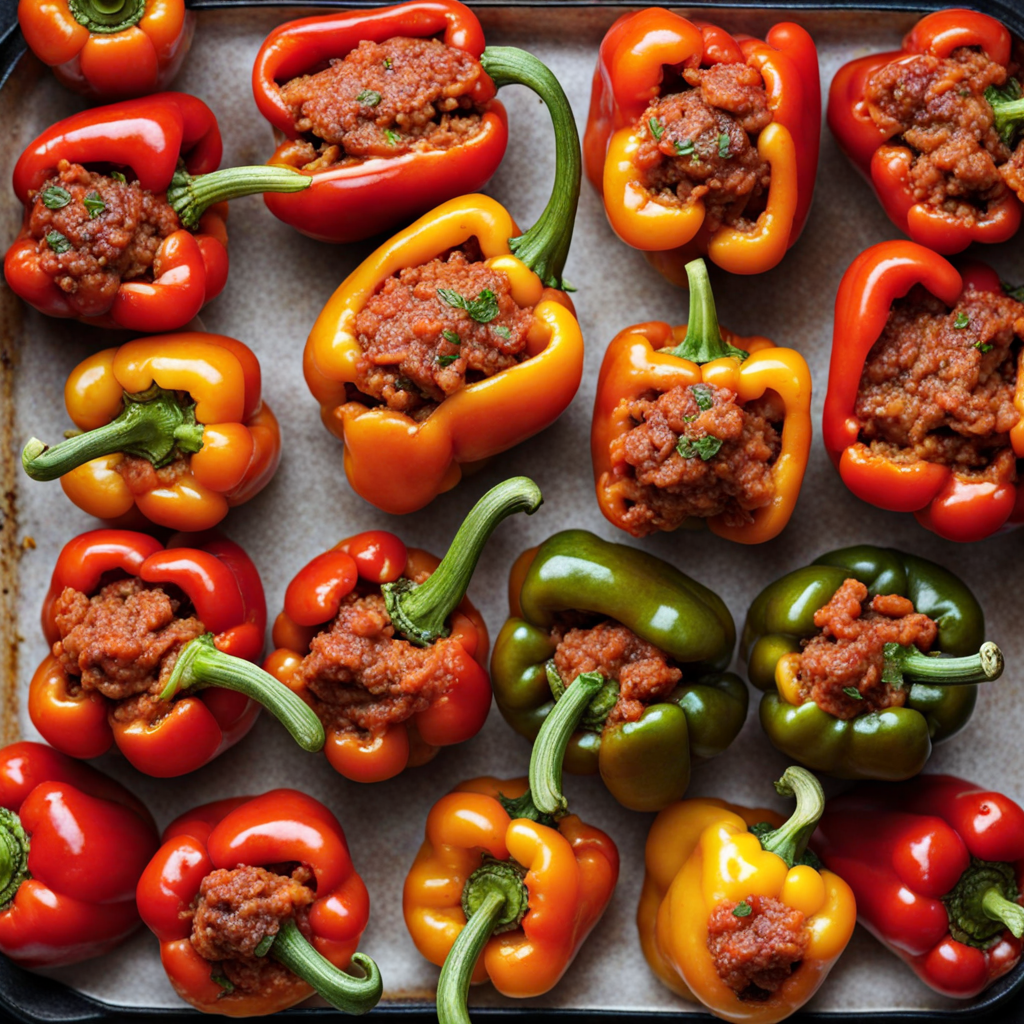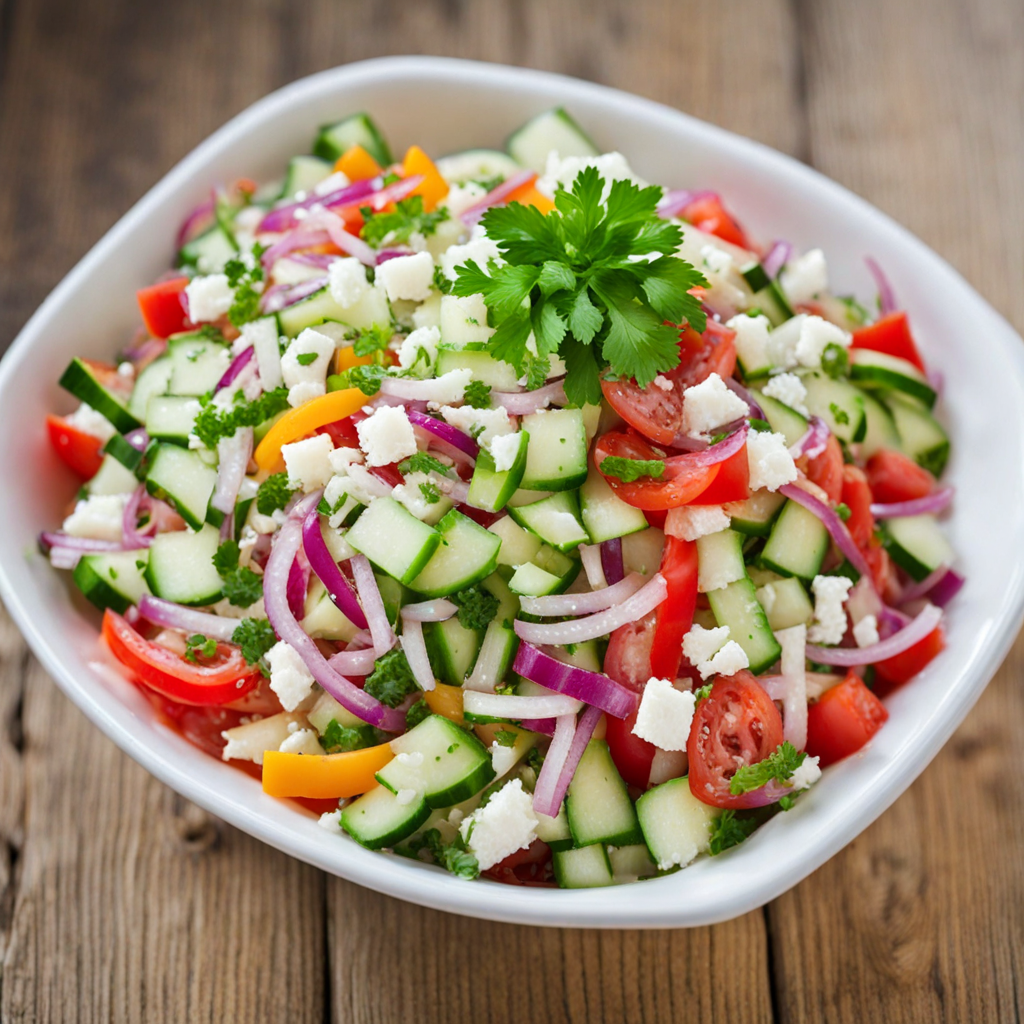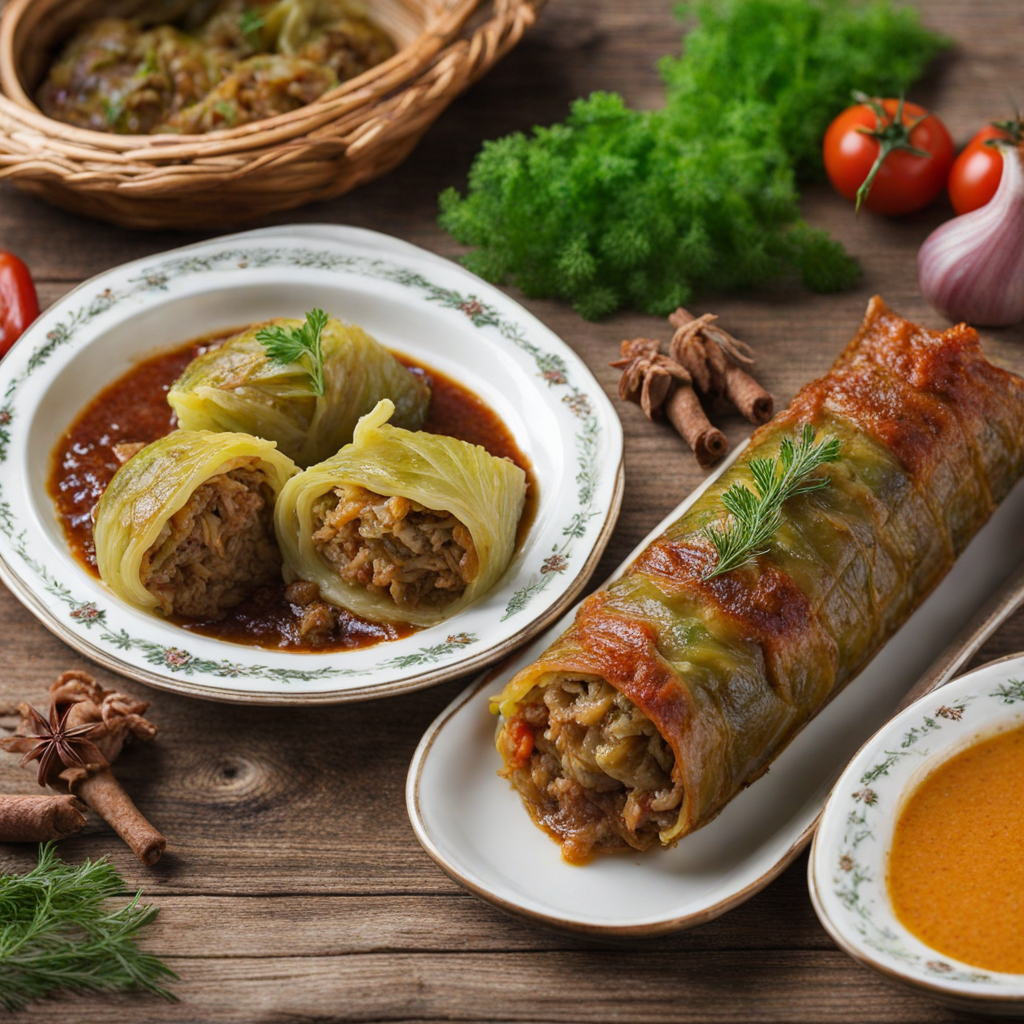Stuffed Peppers
Stuffed Peppers, or "P stuffed with a savory mixture of rice, minced meat, and an array of aromatic spices. This traditional Bulgarian dish showcases vibrant bell peppers, typically red or green, which are hollowed out and filled to the brim with a hearty blend of ingredients. The stuffing often includes onions, tomatoes, and sometimes herbs like parsley and dill, lending a fresh and fragrant character to the dish. Depending on the region and family recipe, variations may include different types of meat or even vegetarian options using lentils or beans, making it a versatile choice for all palates. Once assembled, the stuffed peppers are gently simmered in a rich tomato sauce, allowing the flavors to meld beautifully. The cooking process softens the peppers, enhancing their natural sweetness while the filling becomes tender and infused with the essence of the sauce. The result is a comforting and flavorful dish that delights the senses with every bite. Often served warm, they can be accompanied by a dollop of yogurt or a sprinkle of feta cheese, adding a tangy contrast that elevates the overall taste experience. Stuffed Peppers hold a special place in Bulgarian cuisine, often enjoyed during family gatherings and celebrations. The dish is not just a meal; it's a cultural experience that connects generations through shared recipes and techniques. Whether enjoyed at a traditional restaurant or made at home, indulging in these stuffed delights offers a delicious glimpse into Bulgaria's rich culinary heritage, making it a must-try for anyone eager to explore new tastes.
How It Became This Dish
Pълнени чушки: A Culinary Journey through Bulgarian Tradition The dish known as "Пълнени чушки" (pronounced "palneni chushki"), or stuffed peppers, is a beloved staple in Bulgarian cuisine, evoking the warmth of home-cooked meals and the rich tapestry of the country's culinary heritage. This dish, with its vibrant colors and delightful flavors, encapsulates centuries of history, cultural significance, and regional variations that have evolved over time. Origins of Stuffed Peppers The exact origins of stuffed peppers are difficult to trace, as they are found in various forms across many cultures, particularly in the Mediterranean and Eastern European regions. However, the pepper itself can be traced back to the Americas, where it was cultivated by indigenous peoples long before the arrival of European explorers. After Christopher Columbus's voyages in the late 15th century, capsicum peppers were introduced to Europe, quickly becoming a popular ingredient in various cuisines. In Bulgaria, the love for peppers flourished, especially in the fertile soil of the Thracian Valley, which provided an ideal environment for growing this vibrant vegetable. By the time stuffed peppers became a culinary tradition in Bulgaria, the dish had been influenced by a blend of Ottoman, Slavic, and Mediterranean culinary practices. The use of peppers as a vessel to hold fillings was a practical solution for utilizing available ingredients, and it became a symbol of resourcefulness in Bulgarian households. Cultural Significance Stuffed peppers hold a special place in Bulgarian culture, representing not only a dish but also a sense of community and familial bonds. Traditionally, families would gather to prepare this dish, often during the harvest season when the peppers were at their peak. This communal cooking experience fosters connections, as generations come together to share stories, laughter, and culinary techniques. The dish is often associated with festivals and celebrations, particularly during the Feast of the Assumption in August, when abundant peppers signal the end of summer harvest. In many households, it is customary to prepare stuffed peppers for family gatherings, weddings, and holidays. Each region in Bulgaria has its own twist on the recipe, reflecting local ingredients and preferences, further enriching the cultural tapestry of the dish. Ingredients and Preparation At its core, "пълнени чушки" consists of bell peppers filled with a mixture of rice, minced meat (typically pork or beef), and various spices, including paprika, black pepper, and parsley. Some variations may incorporate vegetables, herbs, or even nuts, showcasing the versatility of the dish. The peppers are usually baked in a tomato sauce, adding a rich and savory flavor that complements the filling. The preparation of stuffed peppers is a labor of love that involves selecting the right peppers—usually the larger, firmer varieties that can hold the filling without breaking. The filling is prepared separately, with the rice partially cooked before being combined with the meat and spices. The mixture is carefully spooned into the hollowed-out peppers, which are then placed in a baking dish, covered with tomato sauce, and roasted to perfection. Evolution Over Time As Bulgaria has undergone significant political, social, and economic changes through the centuries, so too has the preparation and presentation of stuffed peppers. Under Ottoman rule, Bulgarian cuisine absorbed various influences, including the use of spices and cooking techniques, which can still be seen in the flavors of modern stuffed peppers. The 20th century brought about a shift in dietary habits, with the rise of urbanization and industrialization leading to changes in food production and consumption. While traditional methods of cooking remained prevalent, the introduction of convenience foods began to modify how families prepared meals. However, the essence of stuffed peppers endured, as they continued to be a symbol of home and hearth. In contemporary Bulgarian society, stuffed peppers have maintained their status as a comfort food. They are featured in both home kitchens and restaurant menus, showcasing the dish's adaptability. Creative chefs have begun experimenting with fusion variations, incorporating international flavors and ingredients, yet the traditional recipe remains a cherished favorite. Regional Variations While the basic concept of "пълнени чушки" remains constant, regional variations abound, each bringing its own unique flair to the dish. In the Sofia region, for instance, it is common to find peppers stuffed with a mixture of rice, minced meat, and herbs, often served with a side of yogurt. In the southern regions of Bulgaria, particularly in the Rhodope Mountains, you may encounter a vegetarian version, where the filling consists of rice, herbs, and nuts, reflecting the abundance of local produce. Another interesting variation comes from the town of Plovdiv, where locals sometimes add a hint of spicy chili to the filling, giving the dish a delightful kick. Meanwhile, in the coastal regions along the Black Sea, seafood may be incorporated into the filling, showcasing the diversity of Bulgaria's culinary landscape. The Modern Table Today, "пълнени чушки" can be found in homes and restaurants alike, celebrated for their comforting flavors and hearty nature. They have become a staple during family gatherings, particularly during the colder months, when the warmth of a freshly baked dish brings people together. The dish has also made its way into the hearts of Bulgarians living abroad, serving as a culinary bridge to their homeland. In recent years, there has been a resurgence of interest in traditional Bulgarian cuisine, as younger generations seek to reconnect with their cultural heritage. Cooking classes, food festivals, and social media platforms have played a pivotal role in popularizing traditional dishes like stuffed peppers, allowing them to reach a global audience. Conclusion "Пълнени чушки" is more than just a dish; it is a celebration of Bulgarian culture, history, and community. From its origins and cultural significance to its evolution over time, stuffed peppers encapsulate the essence of Bulgarian culinary identity. Whether enjoyed in a cozy home or a bustling restaurant, this dish continues to warm hearts and nourish souls, serving as a delicious reminder of the rich tapestry of flavors and traditions that define Bulgaria. The enduring legacy of "пълнени чушки" is a testament to the power of food to connect people across generations and geographies, making it a cherished part of Bulgaria's gastronomic heritage.
You may like
Discover local flavors from Bulgaria







